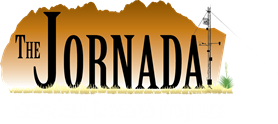| Title | Geospatial methods and data analysis for assessing distribution of grazing livestock |
| Publication Type | Conference Paper |
| Year of Publication | 2010 |
| Authors | Anderson D.M. |
| Conference Name | 4th Grazing Livestock Nutrition Conference |
| Date Published | 07/2010 |
| Conference Location | Estes Park, CO |
| ARIS Log Number | 257420 |
| Abstract | Free-ranging livestock research must begin with a well conceived problem statement and employ appropriate data acquisition tools and analytical techniques to accomplish the research objective. These requirements are especially critical in addressing animal distribution. Tools and statistics used to describe the plant-livestock interface must consider that foraging is highly place dependent, foraging is not a random process and livestock foraging mainly occurs in groups. Since animal movement implies consecutive locations, each the result of a host of interactions between the animal and its surroundings, classical agronomic statistics may not provide the optimum analytical tools to address spatially related phenomena. By far the greatest amount of research on quantitative tools to understand the use of space by animals has come from the wildlife community and more recently from ecologists exploring the distribution of both animal and plant species over large geographic areas. However, interest in geospatial data analysis methods is also found among animal-range scientists, primarily because new electronic technologies make it possible to accumulate data from free-ranging animals in seconds or less. Therefore, the rate at which data can now be collected produces inordinate amounts of information that must be correctly analyzed. Consecutive animal locations on a landscape are not statistically independent; therefore, autocorrelation is no longer a theoretical but real concern and must be addressed in animal distribution analyses. This paper presents an overview of research that affects landscape use together with possible geospatial tools that can be used when evaluating free-ranging animal distributions. Geospatial methodology is not trivial nor is it a mature field, but rather is evolving; therefore, the range-animal scientist should work as a team member with other disciplines including but not limited to statisticians, modelers, computer scientists, cognitive scientists, physicists, sociologists, and possibly geographers when attempting to understand animal distribution. Literature referenced in this paper is comprehensive in breath but not exhaustive in detail and thus serves as a beginning point for those wanting to know what has already been researched concerning livestock distribution on landscapes. |


